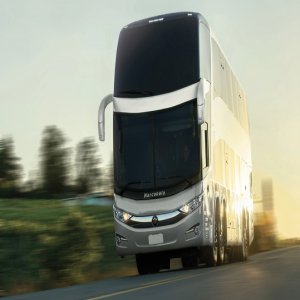Green Practices that Increase Competitiveness

STORY INLINE POST
Q: How is the adoption of green practices increasing Nissan Mexicana’s competitiveness?
A: When you consider the whole lifecycle of a vehicle you see the impact it has on the environment. There is no OEM today that does not incorporate themes of sustainability in its manufacturing processes. Within our Nissan Power 88 business plan there are several pillars of growth, one of which is Zero Emissions Leadership, a major component of the company’s DNA and vision. This strategy includes the Nissan Green Program, which allows us to incorporate green practices in the lifecycle of our vehicles. Nissan Mexicana has stood out in reducing the carbon footprint and raw materials used in manufacturing processes. This is remarkable considering the manufacturing capacity of Nissan Mexicana and the fact that in 2014 it assembled more than 800,000 vehicles, of which almost 70% were exported.
Q: How has the incorporation of renewable technologies increased Nissan Mexicana’s local and global competitiveness?
A: We are leaders in reducing the energy consumption of every vehicle assembled, and we are more competitive than our plants in Japan. A significant percentage of the energy we consume comes from renewable energy sources. In the case of the Aguascalientes A1 Plant, Nissan’s biggest manufacturing complex in Mexico, around 66% of electricity consumption comes from renewable energy and the rest from combined-cycle plants using clean fuels like natural gas. Among the 58 plants held by the Renault-Nissan Alliance worldwide, Nissan Mexicana is the only one that incorporates biogas generated from a landfill. The waste to energy project falls under the selfsupply scheme and the three parties involved are the city council, which manages the landfill and is certified with ISO 14000, ENER-G, a British developer with the technology and experience, and Nissan, which is the off-taker and provided the financial certainty to the project.
Q: How is Nissan making its supply chain more environmentally friendly, while supporting suppliers in their sustainability goals?
A: Leadership in sustainability and efficiency can be claimed only if the suppliers cooperate. For this reason, we have the Nissan Green Procurement strategy, which is a global initiative to select suppliers according to special criteria. For instance, if the seats and front end modules of the vehicles are manufactured right next to the plant, this reduces the logistics, emissions, and lead times. The main objective is to take suppliers to the next level of efficiency, because no supplier can be competitive if they generate too much waste or consume too much electricity. In the vicinity of Aguascalientes’ A2 Plant, Nissan has a supplier park called Douki Seisan Park, with companies such as POSCO MAPC, TACHI-S, and Sanoh that each promote synchronized production processes. Suppliers in this park are certified, have efficient systems, and follow the same environmental practices as Nissan. Sustainability gives suppliers continuity in their operations and makes them more competitive in the market.
Q: What steps has Nissan Mexicana taken in order to improve its manufacturing processes and waste management strategies?
A: Nissan Mexicana has a global benchmark in water and waste management strategies. The plants in Mexico take the lead by assembling vehicles using less water. For instance, the Aguascalientes A1 Plant uses 1m3 of water per vehicle assembled, while Aguascalientes A2 Plant uses 1.4m3, and the CIVAC plant uses 1.5m3. To achieve sustainability there must be a balance between green practices and economics, because as you generate less waste you immediately lower costs and increase competitiveness. Regarding recycling we have made progress in the assessment of residues. For example, the stamping process generates residue of the metal sheets, which is now offered to suppliers to use for manufacturing small parts. One of the areas of opportunity we have identified is the scrapping of vehicles once they reach the last stages of use. We have invited and supported the Ministry of Environment and Natural Resources (SEMARNAT) to visit our manufacturing sites in Japan in order to learn how the recycling process works and bring this knowledge to Mexico. Nissan Mexicana is taking active steps to identify and minimize the direct and indirect impact of its business on the environment. It is through the implementation of these strategies that Nissan has been able to increase its competitiveness and stand out from the crowd.






















